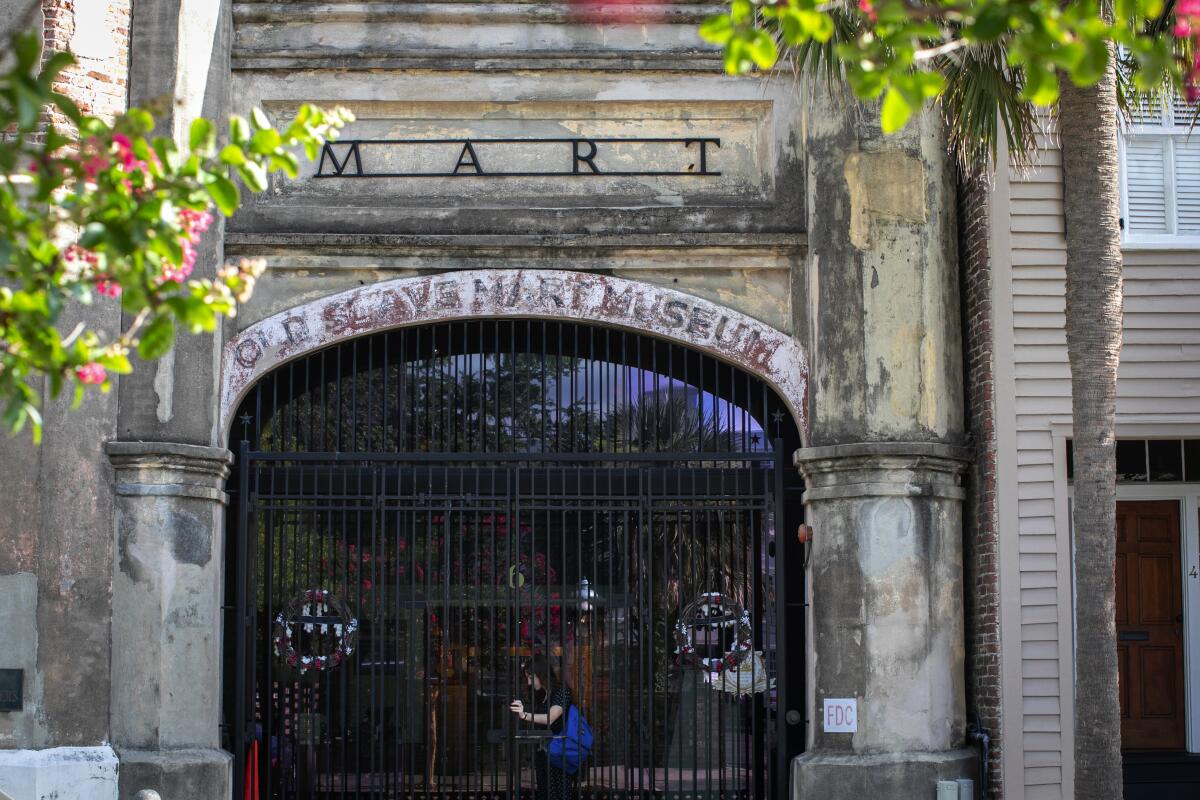Kids deserve to know the truth about America’s racist past. Even if it’s painful

- Share via
Last month, school officials in St. Petersburg, Fla., told teachers to stop showing students a Disney movie about Ruby Bridges, the 6-year-old Black girl who integrated an all-white New Orleans elementary school in the 1960s.
A white parent had complained that the movie was not appropriate for second-graders, as the scenes showing people threatening Ruby and calling her names might teach students that white people hate Black people.
Oh, my gosh, you might find yourself asking, could some white people hate Black people?
Did white people ever fight to keep Black children away from their schools, their neighborhoods, their stores, their buses, their drinking fountains?
It’s just really hard to imagine the legacy of racial hatred, I guess, if you are a white Florida parent in the grip of fear about “critical race theory” and “woke ideology.”
After all, you live in a state where the Republican governor has settled on a strategy of exploiting white angst for political gain as he blusters his way toward a presidential candidacy. (Gov. Ron DeSantis’s go-to line: “Florida is where ‘woke’ goes to die.”)
In that charged political environment, it only makes sense that a white parent mistakenly believes that a movie about racism is designed to make your white child feel bad. And we can’t have that.
For Black people, though, the truth is that some very bad things are baked into American politics, justice, education, housing, job markets. Racism doesn’t affect just wealth, though. It plays a big role in health, as well.
For reasons having nothing to do with genetics, life expectancy is shorter for Black Americans than for white Americans. A 2020 study, for instance, found that “discrimination is a chronic stressor that may increase the risk of hypertension.”
In this country, the high rate of Black maternal mortality is a national shame.
Fortunately, a growing number of Americans seems to understand the relationship between poor outcomes for Black Americans and the legacies of slavery, oppression and systemic racism.
They also grasp that over the decades — centuries, really — racist policies made it possible for some people (i.e. white Americans) to flourish, while impeding progress for others (i.e. Black Americans, indigenous Americans and other people of color).
Those willing to face the past with an open mind understand there is a systemic reason, unrelated to any individual’s behavior, why the median wealth of white households is nearly 10 times greater than the wealth of Black households.
Most Americans oppose the idea of cash reparations as a way of atoning for the ills of slavery and the many ways its noxious repercussions inform the present. But the concept of reparations is hardly revolutionary or new. And reparations can take many non-monetary forms, starting with the unfulfilled post-Civil War promise of “40 acres and a mule.”
In 1988, for instance, President Reagan apologized for the incarceration of Japanese Americans during World War II and authorized a payment of $20,000 to each living former detainee.
And there are reparations efforts large and small taking place all over the country today.
In 2021, Evanston, Ill., created a slavery reparations plan for its Black residents. In 2022, Harvard University allocated $100 million to study the ways the university benefited from slavery and develop a process for “reckoning and repair.”
Last month, the San Francisco Board of Supervisors heard a report from its reparations task force that recommended, among other things, payments of $5 million to every eligible Black adult, the elimination of personal debt and guaranteed annual incomes of at least $97,000 for 250 years.
Last week, the California task force appointed to study reparations for descendants of enslaved people met for two days of public hearings. Economists advising the task force have estimated that Black Californians may be owed more than $800 billion for decades of housing discrimination, overpolicing and disproportionate incarceration.
Maybe these eye-popping dollar figures will never be fully paid, but what reparations discussions do, and do so well, is raise our consciousness about the real costs of slavery and institutional racism.
It’s a discussion that’s been going for years. In 2014, Ta-Nehisi Coates’ landmark piece in the Atlantic, “The Case for Reparations,” reignited a national discussion with its granular statistics about the ways in which Black Americans have been shut out of the fabled American Dream.
(When I looked up the piece Friday, I was stunned to see an appended editor’s note: “On February 1, 2023, the College Board announced its finalized curriculum for an AP African American Studies course. It has removed work — present in the pilot program — by writers such as bell hooks, Kimberlé Crenshaw, and Ta-Nehisi Coates, the author of this article.” Florida strikes again.)
This week, I’ve been reading “How the Word Is Passed: A Reckoning With the History of Slavery Across America,” a 2021 book by the poet and Atlantic staff writer Clint Smith.
Smith, a New Orleans native, visits nine places with strong links to slavery, exploring the ways in which the institution is memorialized, or distorted, or perpetuated to this day.
In a visit to Thomas Jefferson’s plantation, Monticello, in Virginia, he mines the contradictions of the man who wrote “all men are created equal” and also enslaved his own children.
At Angola, the Louisiana prison built on the site of a plantation, he is thrown back in time watching Black inmates pick cotton under the gaze of horse-mounted guards.
He spends a Memorial Day in Petersburg, Va., with Sons of Confederate Veterans, one of whom shows him the grave of a Black man, Richard Poplar, who, the Confederate son claims, served as an officer in the Confederate Army. Smith’s research reveals the man was most likely a cook.
It’s the sort of book that should be taught in all American schools, but is caught in the crosshairs of one of the most ignorant battles of our time: the fight to squash the truth about slavery and racism.
Unlike the movie “Ruby Bridges,” Smith’s book hasn’t been banned exactly. But it has been suppressed.
Last week, Smith told NPR’s Terry Gross that a private school, which had selected “How the Word Is Passed” as a text for all students to read, canceled an order of 2,000 copies and disinvited Smith from speaking with its students.
His speaking agency was told, said Smith, that “they didn’t want any sort of controversial critical race theory books being inserted into the lives of students and having them indoctrinated with a particular set of views.”
Of course not. We don’t want to give children an uncomfortably true impression about our country’s horrific past.
More to Read
A cure for the common opinion
Get thought-provoking perspectives with our weekly newsletter.
You may occasionally receive promotional content from the Los Angeles Times.










